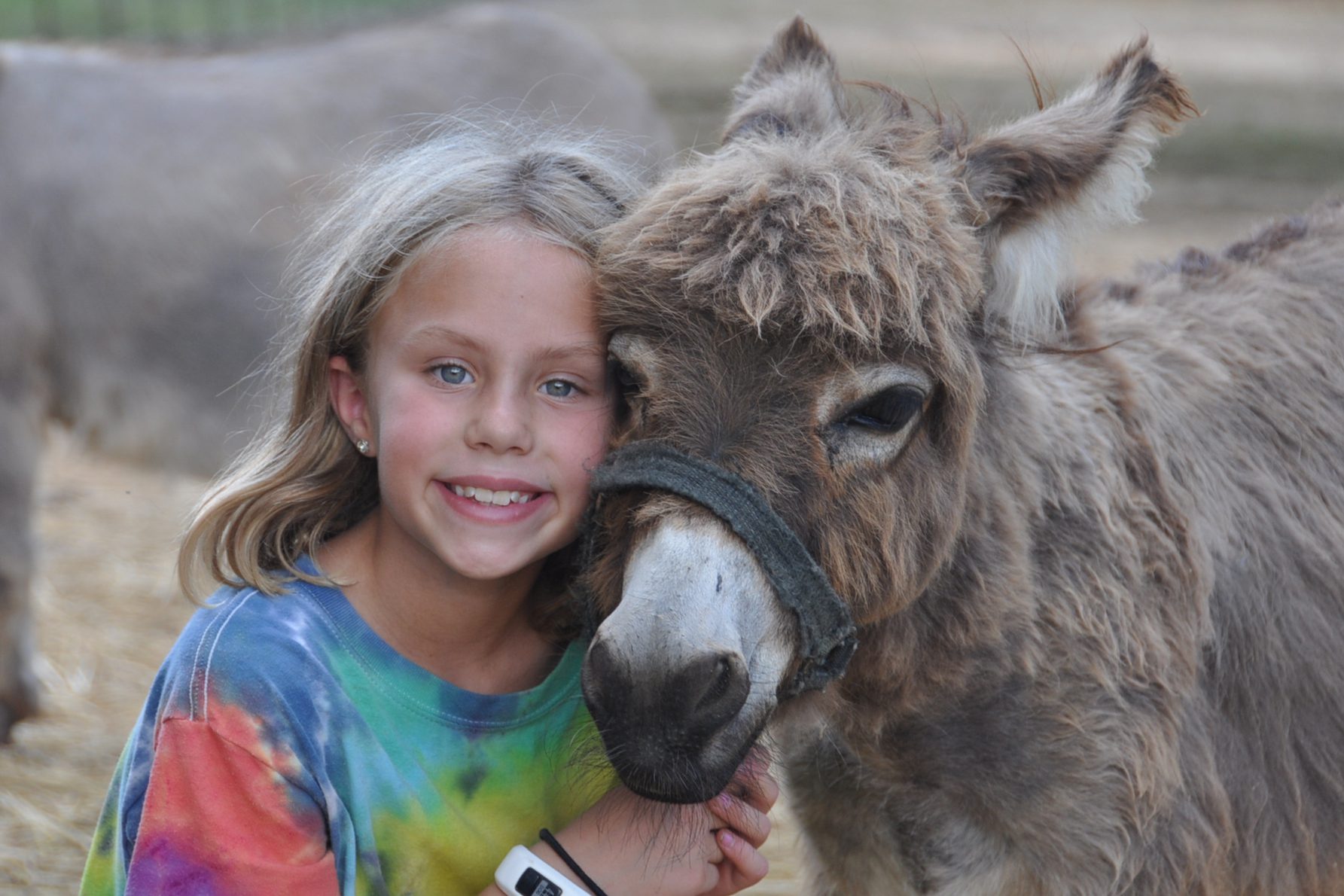Miniature Donkey
Equus africanus asinus
Donkeys were originally brought from Europe to the New World in the fifteenth century, which subsequently spread to Mexico. Miniature donkeys are native to the Mediterranean islands of Sicily and Sardinia, and were first imported into the United States in 1929 by Robert Green. Donkeys, while similar to a horse in shape are characterized by their large head, long hears, cow-like tail, and shorter legs. Like other grazing animals, Donkeys’ eyes are on the sides of their heads, giving them a wide field of vision. Equipped with both monocular and binocular vision, they can see from two fields of vision at once (monocular) to focus on the same thing with both eyes at the same time (binocular). They have a blind spot directly in front and behind themselves.
It is estimated the current U.S. population is estimated to be from 10,000 to 20,000. Today, it is challenging to import miniature donkeys as they are reported near extinction in their native area. Donkeys are social herd animals and communicate by braying, a sound also known as the “hee-haw”. Being social herd animals, Donkeys do not respond well to isolation. Each donkey has its own distinct style of braying. Having such a docile personality is a major attraction to miniature donkeys. They make wonderful pets and companions for children and the elderly with their laid-back personalities.

Miniature Donkeys were first bred on the island of Sardinia, west of Italy.
HABITAT -In the wild they roam grassy fields and pastures.
DIET -Sufficient amounts of grass for grazing sustain them, supplemented by hay. They will also forage for tree and plant leaves.
FUN FACT -The world’s shortest donkey is 25.29 inches at the shoulders.
SOCIAL BEHAVIOR -They live together as social herd animals, also very sociable with humans.
ACTIVITY -Miniature Donkeys are diurnal being active during the day and sleeping at night.
PREDATORS -Predators include fox, coyote, dogs, and bobcats.
SIZE -They are no more than 3 feet tall, weighing between 200 to 450 pounds.
RELATIVES -Relatives of the Miniature Donkey include the African Wild donkey, horses, and zebra.
CONSERVATION -They are categorized as NE (Not Evaluated) species by the IUCN, but reported to be near extinction in their native area.
Cub Creek Animal Care Information
Housing - Our miniature donkey herd thrives in open pasture environments, with lush green fields for grazing. The pastures are enclosed with fencing to keep predators out, and provide a covered area to take shelter in extreme weather. We provide automatic water dispensers that always keep fresh water for them.
Diet - The majority of our miniature donkeys diets consist of easy keepyer stock and hay. This provides well balanced nutrition, supplemented by lush grasses they graze on. The food is provided to them in hanging food bucket containers, a feed trough, and hay feeders. Sometimes they enjoy special treats of various fruits and vegetables!
Enrichment - We love our miniature donkeys and provide them with plenty of enrichment. Scatter feeding is a technique we use to help make mealtimes last longer, and allows them to eat slower. Since the food is more spread out rather than in one large pile, they must do a bit more foraging. We also give them livestock balls to play with, and like to let them roam and explore outside of their regular grazing areas.


